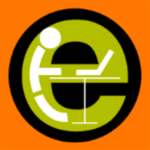Home » Posts tagged 'Academic life'
Tag Archives: Academic life
New Starts at Home, New Focus at Work – Autumn 2025
This time of year always brings a sense of new beginnings—buying school uniforms at home and preparing for the arrival of new students at work. This autumn adds another milestone: getting my eldest ready to start their new adventure at university.
As they head off into this new chapter of their life, I’ve been reflecting on what I’ve learned from my sabbatical and what the coming academic year might hold for me. My diary is already filling up with interesting things, and I’m excited for the months ahead. But I also know I’ll face the familiar challenge of not overloading myself by saying “yes” to too many opportunities.
Recently, I had the chance to talk with Geraldine Fitzpatrick about how I’m trying to stay in control of my commitments by:
a) working out how much of my time is already spoken for, and how much is still available to promise to others, and
b) keeping a very short list of main goals for the year, giving each one its own season to be my priority.
You can catch our conversation on the latest episode of Geraldine’s podcast. And if you’d like to try the same exercise, check out the approach described by Loleen Berdahl for calculating your commitments and your remaining time to promise.
Questions questions
By Nancy Xia
This year at CHIWORK 2025, which took place in the beautiful city of Amsterdam, I challenged myself to ask questions to the speakers at the conference.
Initially, my motivations were entirely personal. I wanted to develop my own confidence in voicing my thoughts and reflections before an audience. In addition, many of the works presented were genuinely engaging, thought-provoking, and sparked my curiosity, and I found myself putting up my hand at papers I did not expect myself to ask questions for!
This year, I was most taken in by the studies which explored the ways in which technology facilitated, or disrupted, people’s abilities to present themselves in a professional environment. In Framing the (in)visible: Insights into Visibility Practices of Remote Workers by Mehrvarz et al., I found that knowledge workers may signal their availability through leaving tabs open. In Management Strategies for Reducing Boundary and Identity Clashes When Using Discord for Both Working and Gaming by Mandryk et al., I learnt that workers manage different levels of transparency and identity clashes between their professional and gaming persona on Discord. Finally, I was curious to note, in What Does Success Look Like? Catalyzing Meeting Intentionality with AI-Assisted Prospective Reflections by Scott et al., that users dislike making their intents to socialise explicit when reflecting on meeting intentionality. They have given me much fruit for thought in my own work, where I explore how people’s perceptions of specific software tools, such as spreadsheets or GenAI, can discourage people from engaging in important knowledge sharing activities. Because our work can be such an important part of our identity, so too does the technology that we use in this work become inextricably connected to how others see us.
But outside of this technology, in a very real conference, surrounded by very real people, every interaction exists in the moment. The digital bubbles of working from home give us time to think and prepare before every interaction. At the conference, there is no such luxury. Talks and slides and Pushbox microphones fly past, and there is always the chair, tapping their watch expectantly as you try to untangle your thoughts along with your tongue.
Yet when inspiration and curiosity sparks, the questions come easily. And with questions comes dialogue, venting, friendships, and learning. I quickly found that my favourite people at the conference were the ones who asked engaging questions themselves. Whether it was sitting in and listening in on a well-articulated discussion that I would never have quite known how to phrase for myself, or having someone ask me a well-thought out and challenging question in response to my own work, my
personal challenge slowly helped me to realise that it was the questions – asking and being asked – that led to the most fruitful moments of connections.
As a so-called ‘digital native’ who has never experienced a non-virtual work environment, I am used to digital workplaces that gives me too much time to curate and fuss over my social image. But my time at this conference has reminded me that it is often more rewarding to choose genuine curiosity over a polished appearance. I hope to stay curious, and keep working up the courage to ask questions throughout my life.
Me and Fairuz Nawer Meem – a fellow PhD student who I met at another conference and who came to CHIWORK this year thanks to my recommendation!
I’m super grateful to Anna for making this trip happen for all the A-team, and Yoana for all the organisation! Wonderful connections were made on the journey as well – especially over a devastatingly competitive game of Kemps/Kent!
First Academic Conference Experience
By Yifei Gao
CHIWORK 2025 was the very first academic conference I’ve attended since starting my PhD studies in February 2025. It was truly an eye-opening experience. I now have a much clearer understanding of what an academic conference involves, and I’ve learned a lot from participating.

First, I want to express my heartfelt thanks to Anna for taking us on this trip. Second to Yoana for organising the accommodation and train tickets. I had such an enjoyable time with everyone from our team.

Over the three-day conference, I took part in two workshops on Day 1:
- The Future of Human-Robot Synergy
- Paving the Way for AI that Supports Flourishing at Work
These workshops included group activities (such as designing a robot to help people work more efficiently in restaurants) and lively discussions with participants around the table. It was inspiring to share ideas and explore practical applications of AI in collaborative settings.
In these workshops, I discovered many links between my own research and the work of others. Notably, many studies emphasised the importance of trust in promoting effective human–robot collaboration—both in the workplace and in educational contexts.
Two presentations on Days 2 and 3 stood out to me:
- tAIfa: Enhancing Team Effectiveness and Cohesion with AI-Generated Automated Feedback – This study resonated strongly with my collaborative paper on evaluating students’ trust in three types of feedback, although their work specifically focused on AI-generated feedback in team-based settings on Slack.
- Cleared for Takeoff – Artificial Intelligence Acceptance in Air Traffic Control – I found this work particularly inspiring because they also used structural equation modelling (SEM) as part of their data analysis. It gave me some inspiration about combining models like TAM, AIAM, and TAWE to explore explanatory variables behind AI acceptance in air traffic control and beyond.
Beyond the academic sessions, CHIWORK was also a valuable opportunity to network and explore potential collaborations. Although almost everyone was new to me (except for our team), I had many friendly conversations and connected with attendees on LinkedIn.

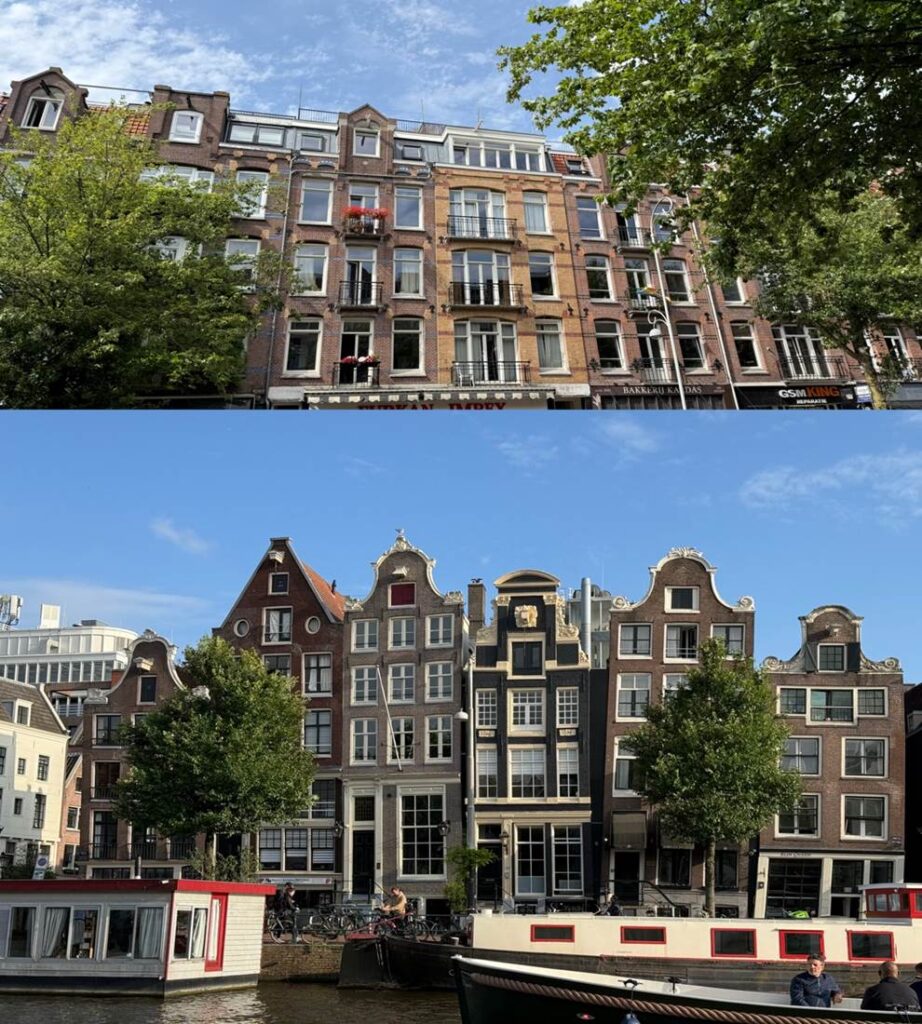
Looking ahead, I’m planning to present at CHIWORK next year. I believe it would be a great opportunity to receive feedback and questions on my work, while also allowing others in the field to get to know me and my research. After delivering presentations at the UCLIC and IOE summer conferences this June, I feel more confident in presenting my research clearly and engagingly—especially at larger international events like CHIWORK.
Peer Review at CHIWORK25
by Shiping Chen
Summer has brought not only sunshine but also the excitement of the annual CHIWORK conference! I’m thrilled to be a paper presenter at CHIWORK this year. CHIWORK 2025 is being hosted in Amsterdam, The Netherlands. Although I wasn’t able to attend in person due to other commitments, I still felt the vibrant academic energy of CHIWORK as an online presenter.
My presentation was scheduled on the morning of 24 June, in the “AI IN HIGH-STAKES AND INSTITUTIONAL WORK” session. As a hybrid conference, CHIWORK provided a seamless and well-coordinated experience, making it easy for both in-person and online participants to engage with the programme. I really appreciated how smooth the transition was between talks, with Zoom rooms and Slack channels well-organised for announcements and Q&A.
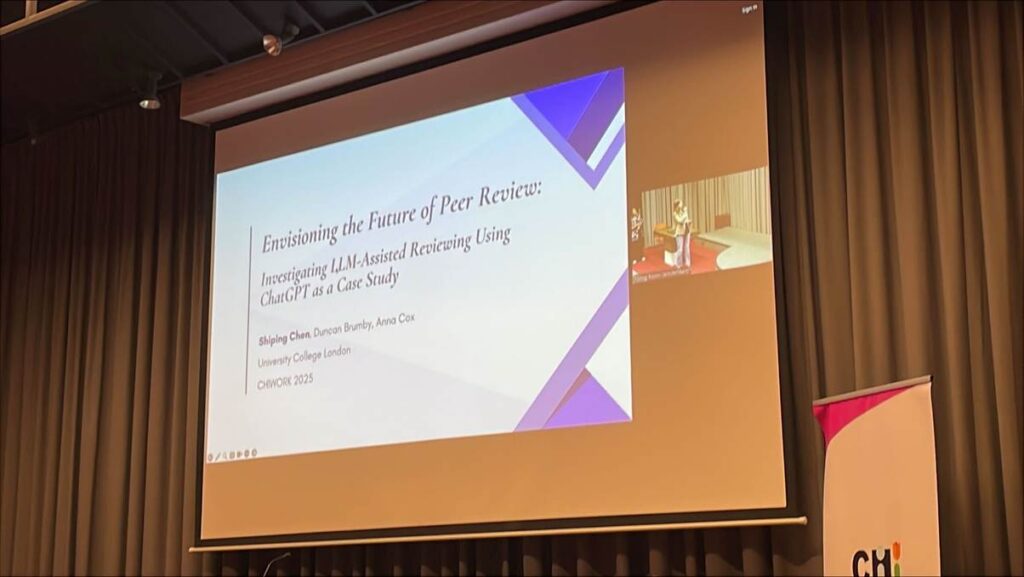
My paper, Envisioning the Future of Peer Review: Investigating LLM-Assisted Reviewing Using ChatGPT as a Case Study, co-authored with my supervisors Prof. Duncan Brumby and Prof. Anna Cox, explores how Large Language Models like ChatGPT can support human reviewers during the peer review process. Rather than treating AI as a standalone reviewer, our study takes a human–AI collaboration perspective to understand how reviewers actually use ChatGPT in practice. We conducted a within-subject experiment with 24 HCI reviewers, each completing two review tasks—one with ChatGPT assistance and one without—followed by post-task questionnaires and interviews. Our findings show that ChatGPT can significantly reduce the perceived workload in drafting reviews and making judgments, and reviewers appreciated its support for summarisation, information retrieval, idea generation, and confidence-building. However, it did not lead to substantial time savings or improvements in review quality. These insights contribute to ongoing discussions around responsible AI integration in scholarly publishing and offer design implications for future peer review tools that complement human expertise.
The Q&A after my presentation gave me the opportunity to respond to insightful questions from the audience that touched on the core motivations and assumptions behind our study. It was a valuable chance to elaborate on the reasoning behind our experimental design, particularly why we chose to focus on ChatGPT as a case study. I was encouraged by the genuine interest in the practical implications of LLMs for real-world peer review, and the discussion helped me further reflect on how such tools might be responsibly integrated into academic workflows.
Although I joined the conference remotely, I still came away with a great deal of inspiration, thoughtful questions, generous feedback, and new ideas to take forward. I’m grateful to have been part of such a welcoming and intellectually engaging community, and I look forward to staying connected with CHIWORK in the years to come.
Reflections from CHIWORK 2025: My First Conference as a PhD Researcher
By Sarah Frampton
This week I had the privilege of attending CHIWORK in Amsterdam – my first conference since starting my PhD. It was energising to be surrounded by researchers who are not only asking difficult questions about the role of AI in the future of work, but also pushing for a deeper understanding of what we should automate versus what we must preserve, support, or augment in human labour.
A personal highlight was the chance to share and reflect on my own work in conversation with the brilliant Marios Constantinides and Cristina Zaga as well as fellow students. Their thoughtful questions challenged me to examine why the problem of hidden mental load in family life, the invisible, value-driven coordination so often carried by one person, is one that might be meaningfully supported by digital tools, rather than other forms of intervention.
I’m leaving with a notebook full of provocations, encouragement, and ideas, and a deep sense of gratitude for this community.
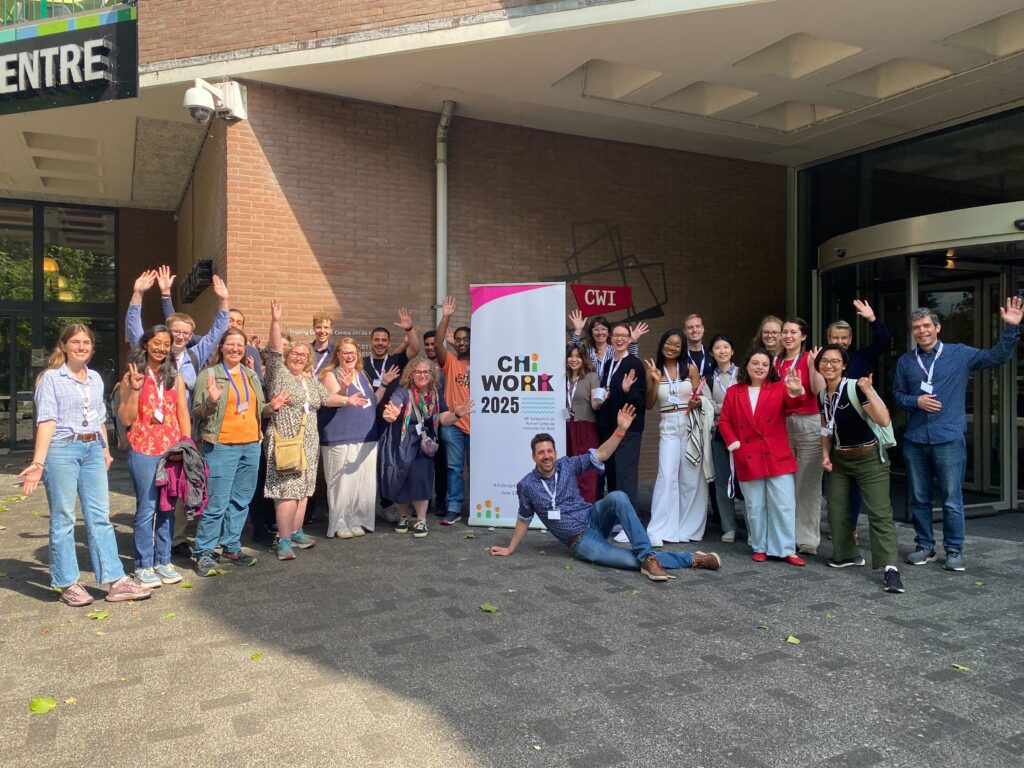
CHIWORK’24 Experience by Yoana Ahmetoglu
CHIWORK is an annual symposium focused on how HCI will support future work. This year, the CHIWORK’24 symposium was hosted by the University of Northumbria in the charming city of Newcastle-Upon-Tyne. There are quite a few cool-looking bridges over the river and across the city

I arrived in Newcastle with an early train from London and enjoyed the beautiful English countryside. Pro tip: the view of Durham Castle from the train is stunning and worth every second of window-gazing. Unfortunately, I did not manage to capture it as I was absorbed by the view but here is a photo from the web. It was a great train ride.

The first event was the student’s consortium where twelve students talked about their research experience, interests and got feedback and advice from mentors, such as Advait Sarkar from Microsoft, Andrew Kun from University of New Hampshire, Carine Lallemand from University of Luxemburg, and others. We presented posters to all attendees of the conferences and got to know each other better. Here is me talking about the studies I’ve conducted during my PhD.

What set this consortium apart was its inclusivity. Unlike typical events focusing solely on doctoral students, this one welcomed student from all levels. I met Audrey Chang from Harvard, an undergraduate student interested in democratizing knowledge who gave me great feedback on my own ideas. Interacting with students from all levels must surely be great for fostering research creativity.
In my talk during the consortium, I reflected on my doctoral journey, now in its fourth and final year, and raised questions about the skills to develop considering the recent AI boom. Horia Maior encouraged me to embrace my unique interdisciplinary expertise and rely on my broad skill set, which, while not easily labeled, allows me to identify and explore HCI research questions. This encouragement made me feel accepted and reassured me. Even if all I got out of the conference was this feeling, it would have been worth it. However, I gained so much more.

During discussions with mentors, I had a brief conversation with Carine Lallemand (in the photo above), who questioned the specific user experience I am designing for. These discussions were among the first to address a common theme: what does it mean to design for worker-centric productivity? Throughout the conference, I was pleasantly surprised to find a consensus on the importance of focusing on wellbeing at work. This includes considering health, work-life balance, and overall job satisfaction as crucial elements of productivity. Realizing that the “HCI for work” community strongly prioritizes these values made me feel a strong sense of belonging to this community.
The first day was followed by an opening key-note speech and a conversations panel, providing a great mix of experiences. My research presentation was during the second day. In our paper, we studied the functionalities which are useful for supporting users of to-do list apps to make more realistic plans. You can read more about this study here.

I thoroughly enjoyed giving the talk and engaging with the questions that followed. It was encouraging to hear from attendees who shared that they enjoyed the presentation. That’s another great thing about attending and presenting at conferences – you get to feel appreciated and valued by the broader community.
During the breaks, we shared lunch and coffees, and presented posters about our doctoral research. The size of the conference was just right to be able to get to know most people well enough (50 attendees).

One of the interesting presentations of the day was about “Trinity: A Design Fiction to Unravel the Present and Future Tensions in Professional Informatics and Awareness Support Tools” by Carine Lallemand and her co-authors. This study introduces Serenity, Affinity, and Capacity—three AI-driven tools. Serenity is like your personal wellbeing coach, monitoring stress and heart rates to keep you zen. Affinity acts as the ultimate team therapist, tracking moods and engagement to ensure everyone is on the same page. Capacity, the productivity guru, keeps tabs on project progress and potential risks, like a bossy but helpful project manager. The narrative humorously shows scenarios where these tools blend into daily work, making us really think (and often laugh) about the tech-driven future of collaboration.
Another interesting study was “Non-Expert Programmers in the Generative AI Future” by Molly Feldman and Carolyn Anderson. This study looks at how AI tools that turn natural language into code can help people who aren’t trained programmers. They studied non-programmers and found that while these tools are promising, beginners struggle with technical language and understanding the code that AI generates. The study also showed that regular computer science classes don’t fully prepare students to use these AI tools. The authors suggest focusing on teaching “code-building” skills, so more people can use AI to create and tweak code easily, making programming more accessible for everyone.
I had several chats with Molly, the author of the paper, who is a kind-hearted and warm person. She gave me useful advice on how to start getting myself educated in LLMs, for example, by learning the terminologies (as opposed to the tech side of things) and by taking a course specifically dedicated to LLMs that may be introduced in the coming fall term. I came out of the conference feeling prepared with more specific long-term goals.

The conference concluded with a town hall where all attendees got a chance to express their ideas about the future of the conference itself, reinforcing the sense of inclusivity. We also got to learn about how the conference came about, and after the closing key-note speech, we found out where next year’s conference will be and how to get involved in helping organize it.
CHIWORK’24 was a great experience, filled with inspiring talks, meaningful connections, and plenty of laughs. I left Newcastle feeling motivated, valued, and ready to dive back into my research with fresh ideas and perspectives. ‘Till next year in Amsterdam!
CHIWORK 2024 trip – a blog post by Shiping Chen
This year, I attended CHIWORK 2024 at Northumbria University in Newcastle from June 25 to June 27 2024+.. As my first in-person conference, it turned out to be an incredibly rewarding and unforgettable experience for me.
Discovering Newcastle: My First Visit
To prepare for the full conference program, I arrived in Newcastle a day early and had the chance to explore its beautiful scenery. From the moment I arrived, the city’s unique blend of historical charm and modern vibrancy captivated me. The stunning architecture of landmarks like the Tyne Bridge and the beautifully preserved Georgian and Victorian buildings added a distinctive character to the cityscape. The Quayside, with its lively atmosphere and picturesque views of the Sage Gateshead and Millennium Bridge, quickly became one of my favourite spots. Wandering through the streets and capturing these sights in photographs, I felt a genuine connection to the city’s rich history and culture. Spending the evening in the city heightened my anticipation for the upcoming conference events.
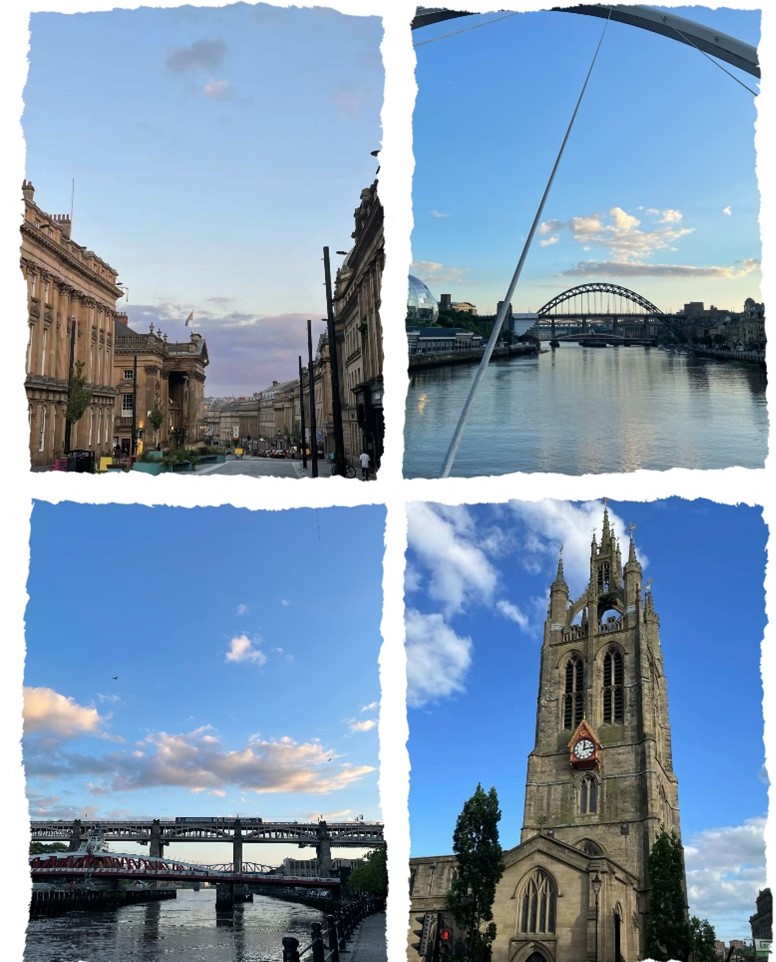
Figure1. Photos I took on my first day in Newcastle.
Student Consortium: A fantastic opportunity to kick off the conference and network with other early career researchers
The first event I participated in CHIWORK was the student consortium, which took place on June 25 from 9:00 to 12:30. It was a great opportunity to meet other PhD students from all over the world and discuss each other’s research for peer feedback. I appreciated the well-organized activities during the Student Consortium, which included self-introductions, group discussions, one-on-one feedback session, and fireside chat with mentors. These activities made it easy for us to get to know each other and start conversations. The groups were divided based on research topics, facilitating the exchange of constructive feedback and ensuring that everyone could both provide and receive valuable insights.
I was part of the group focused on Innovative AI Applications and Assessment with three peers: Ruotong Wang from the University of Washington, who focuses on designing socially grounded AI applications to support team communication in remote work settings such as Zoom meetings and Slack chats; Teshan Bunwaree from Cardiff University, who works on the multidisciplinary assessment of bossware, aiming to provide recommendations for bossware technology in the workplace by integrating knowledge from law, organizational psychology, and technology; and Pranjal Jain from Swansea University, who researches capturing tacit knowledge, primarily through reflective technologies that enable digital systems to record and analyse experts’ decision-making processes.
During our discussions, we shared our research experiences and skills in conducting user studies. We also talked about the journey of a PhD student in different countries. I found these conversations very interesting and rewarding. Hearing about the diverse approaches and challenges my peers faced at their respective institutions broadened my perspective. We were also fortunate to be joined by two mentors, Dr. Advait Sarkar from Microsoft Research and Prof. Andrew Kun from University of New Hampshire. The exchange of ideas and methodologies with them helped me refine my current project. I gained valuable insights from their suggestions, particularly on how to utilize current AI models to build AI tools. Advait mentioned their paper about participatory prompting, which I will describe in more detail in the next section. This advice was especially relevant to my own PhD project, during which I plan to design a generative AI tool to help people review papers more effectively.
I also enjoyed my one-on-one chat with Ciabhan Connelly and the fireside chat with all the mentors. Ciabhan, from Georgia Tech, studies how to mitigate the spread of misinformation and hateful ideologies in online communities, particularly misogynistic ones. We talked about our studies in turn, and then discussed potential solutions and the mixed methods we use in our research. The fireside chat with all the mentors provided a wonderful closure to the Student Consortium. The fireside chat offered us the chance to ask questions and gain valuable advice from experts in both academia and industry. I found the advice on choosing between an academic or industry career and tips for finding academic positions particularly helpful to me. Additionally, learning about the differences in recruitment timing, reference letters, and language requirements between the US, UK, and Europe was incredibly informative.

Figure 2. Photo taken at the end of the Student Consortium. My supervisor, Prof. Duncan Brumby (centre of the picture), was one of the organisers of the CHIWORK 2024 Student Consortium. A heartfelt thank you to Duncan and all the organisers for such a fantastic event!
Panel and paper sessions: diverse topics on how we can better work
The Student Consortium was a delightful appetizer, and the subsequent panel and paper sessions were a sumptuous feast. CHIWORK 2024 featured six paper sessions, each offering diverse perspectives on work research: ‘AI & Wellbeing at Work,’ ‘Inclusive and Accessible HCI,’ ‘Future of Collaborative Work with(out) AI,’ ‘Task, Time, and Stress Management,’ ‘AI in Professional Growth & Workplace Support,’ and ‘Service Sector & Job Market Dynamics.’
I thoroughly enjoyed all the paper presentations; they were high-quality and engaging. I paid particular attention to the papers involving AI, as my own research focuses on generative AI in peer review work. One of my favourite examples was Feldman and Anderson’s (2024) “Non-Expert Programmers in the Generative AI Future,” which identified several barriers to effective use of Code LLMs, such as challenges in technical communication and prompt formulation. Another standout was Drosos et al.’s (2024) “It’s like a rubber duck that talks back: Understanding Generative AI-Assisted Data Analysis Workflows through a Participatory Prompting Study.” which explored the integration of generative AI tools into data analysis workflows, particularly for non-expert end-users. It highlighted how generative AI can streamline information foraging and sensemaking loops, underscoring its potential to support data analysis while also pointing out the need for better-designed prompts and strategies to mitigate the identified barriers. These papers gave me some inspiration on my own research topic: conducting user studies to investigate and evaluate how well a review supportive tool can help reviewers and rethink review workflows in the age of AI.
I also enjoyed my dear friend, Yoana Ahmetoglu’s presentation in the “Task, Time, and Stress Management’ paper session. Yoana’s work looked at how task management apps can incorporate strategies to mitigate the planning fallacy, a cognitive bias leading to underestimating task completion times. It informs the design of more effective task management tools that bridge the gap between psychological insights and practical application (Ahmetoglu, Brumby, & Cox, 2024)
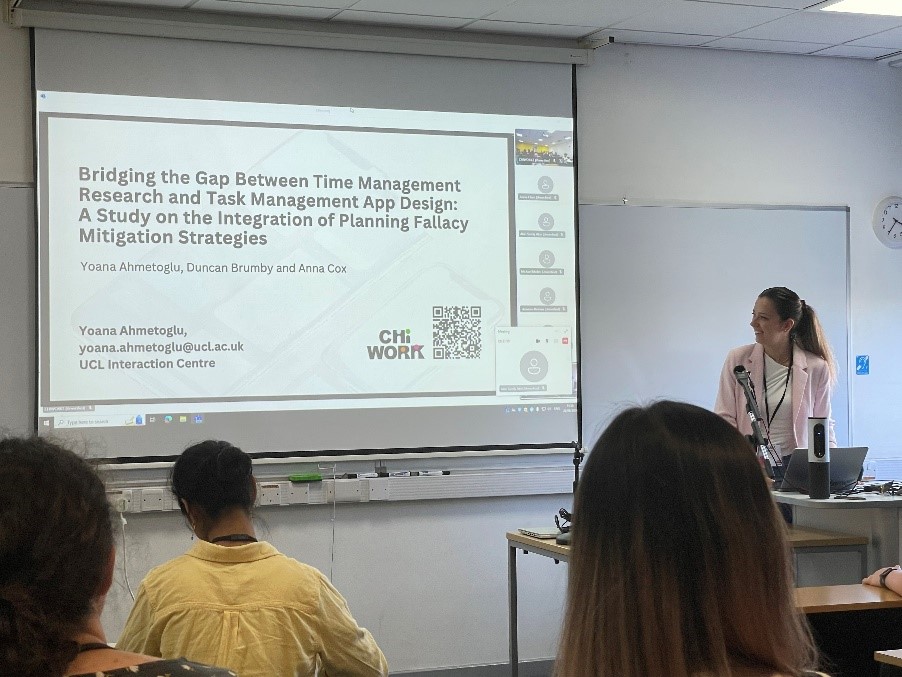
Figure 3. Yoana presenting her paper.
Interspersed among the paper sessions were poster and demo sessions, where I had the opportunity to present my poster on my PhD project titled “How to Alleviate the Peer Review Crisis: Exploring Future Designs and Supporting Tools to Improve the Quality and Efficiency of Academic Peer Review.” I engaged in conversations with attendees about the expected outcomes of my research, my proposed solutions for enhancing academic peer review, and we exchanged ideas on whether designing AI tools for peer review is a viable and beneficial approach.
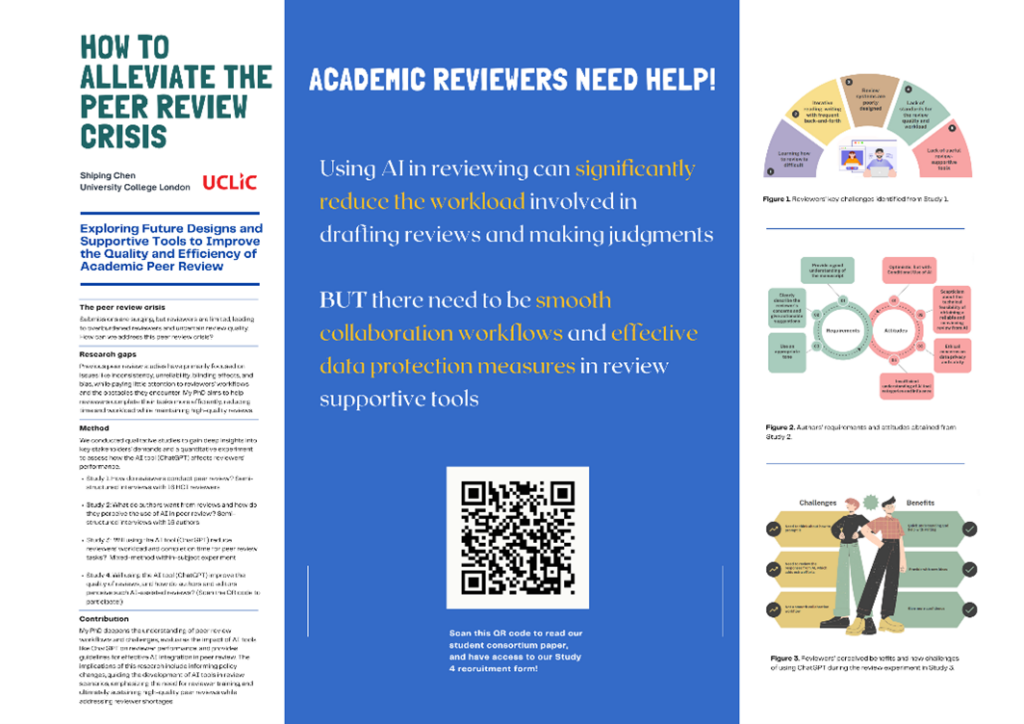
Figure 4. The digital version of my poster presented in CHIWORK 2024.
The panel sessions during the conference were also very insightful. We had a conversational panel at the first day, where my supervisors Duncan and Anna talked about the ChatTL;DR to get people to check the output of LLMs. We then had the Town hall at the last day, where the CHIWORK 2024 general chairs, Dr. Marta Cecchinato and Dr. Marios Constantinides, concluded this year’s conference. We also participated in a ‘co-writing’ session with the steering committee. Using a Miro whiteboard, everyone had the opportunity to contribute to the community values, express their ideas, and provide suggestions, further enhancing our sense of engagement and connection.

Figure 5. Photo taken during my secondary supervisor Prof. Anna Cox’ speech.
Finally, the closing keynote left a lasting impression. CHIWORK 2024 ended with the closing keynote, “The Future of Work: Can Workplace HCI Save (Us from) Generative AI?” delivered by Dr. Jackie O’Neill from Microsoft Research Africa. She presented research on designing worker-centric generative AI tools for gig knowledge workers. I particularly appreciated her discussion on the importance of designing AI systems as collaborators rather than competitors to humans. She emphasized the need to create interfaces and workflows that facilitate seamless human-AI interaction, ensuring that AI tools enhance collective intelligence within teams rather than isolating users from meaningful engagement with their work.
Feel engaged, Feel connected
Overall, my CHIWORK trip was fulfilling. The diverse and open exchanges during the conference truly made me feel engaged and connected. Daily coffee breaks and lunch conversations at the venue, as well as pub chats and dinners after the paper sessions, provided a relaxed environment for us to get to know each other better.
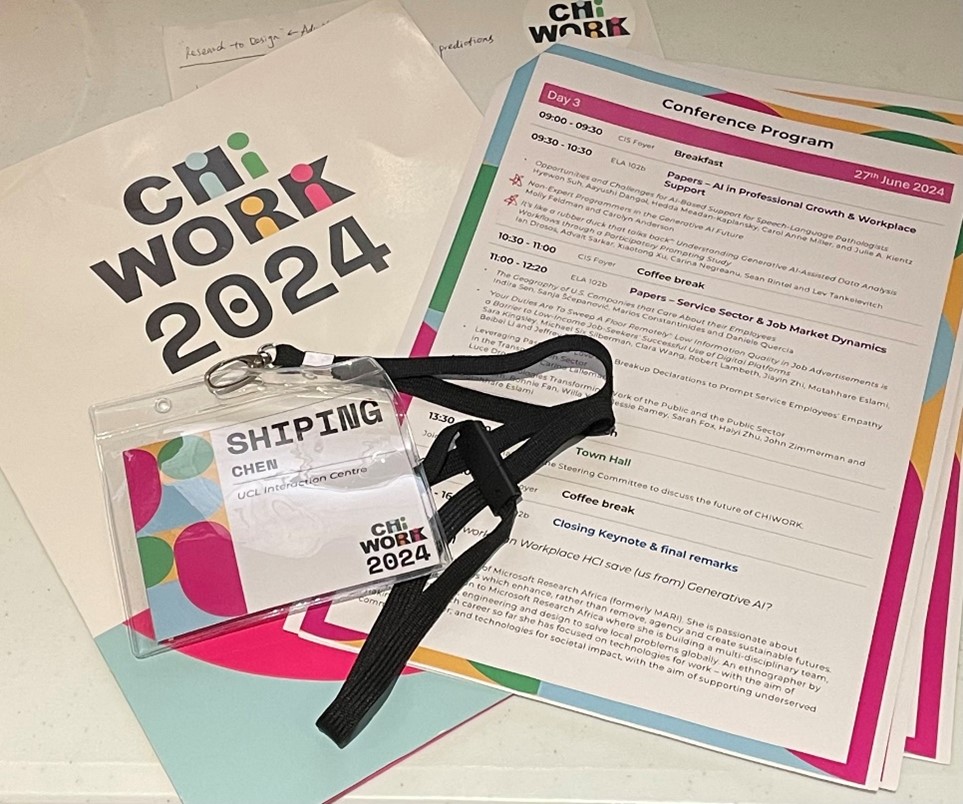
Figure 6. The beautifully designed conference agenda, note papers, and participant card for CHIWORK 2024 serve as memorable keepsakes from my in-person conference experience.
As a PhD student, CHIWORK made me feel fully involved, providing a fun, informative, and enjoyable experience. This wouldn’t have been possible without the hard work of the organisers and volunteers. Thank you all! I look forward to meeting again next year in Amsterdam!-
Attending CHIWORK 2024 – By Qing (Nancy) Xia
The 2024 CHIWORK conference took place last week at Northumbria University, up in Newcastle, and offered a great selection of interesting papers and discussions regarding the future of work.
This year, there were several papers which explored the topic of supporting workers not just in improving their productivity, but also considering factors such as ensuring workers’ autonomy and rights in the age of AI and worker wellbeing. In particular, I really enjoyed the exploratory work presented by Sowmya Somanath on designing technologies to support worker happiness and long-term satisfaction – an ongoing programme of work which I’m excited to follow. Yoana Ahmetoglu, one of my peers and good friend, also delivered an engaging talk on her paper regarding how time management apps could be better designed to reflect key strategies for supporting planning.
CHIWORK also offered a great platform for more exploratory research and reflections that inspired great discussions in the community. Several papers this year adopted a design fiction approach to explore different outlooks and possibilities of introducing AI in the workplace. Some of my favourite examples included Carine Lallemand et al.’s (2024)‘Trinity’, a thought-provoking fiction, imaginatively and immersively presented, in a future where every aspect of our individual and collaborative performances could be quantified and captured by AI, and the paper presented by Michael Muller et al. (2024), which raised important questions about the right of refusal when workers collaborate with organisational AI tools, and what our future may look like if human labour could be quantified and processed by AI just like any other piece of data. Beyond speculating about the future, there were also examples of new research methodologies for understanding human-AI interactions, such as the participatory prompting framework used by Ian Drosos et al. in their paper this year as well.
CHIWORK also included two interesting sessions that I particularly enjoyed. The first session was the Conversations panel, which involved two of my supervisors Professor Duncan Brumby and Professor Anna Cox presenting their alt.CHI work about the current state of academia and the place of AI within it. As a student, it was enlightening and interesting to observe how individuals within the community navigated their differing opinions on this topic and engaged in the debate. The second session was the Town Hall, which brought in-person and online participants together on a Miro board to brainstorm suggestions and ideas for future CHIWORK sessions. It was an interesting insight into understanding the ‘behind-the-scenes’ works of what defines a research community and how it all comes together.
Most exciting for me, as a PhD student, was getting the chance to meet and connect with fellow researchers and students who also worked in my field of interest – namely, the topic of user learning and expertise in the software. Meeting and chatting with Pranjal Jainand Molly Feldman and learning about their work really inspired me to reflect on my research ideas and approach in tackling my future PhD studies. There was also an impromptu opportunity to hop in and contribute to the conference itself – I ended up chairing the second session on ‘Inclusive and Accessible HCI’ on Wednesday, which was great for supporting my public speaking skills despite my initial nerves.
All in all, the conference organisers Marios Constantinides and Marta Cecchinato did a great job in getting the event together. I left CHIWORK this year inspired and excited to come back to Amsterdam for the next session in 2025!
My Work Experience at University College London Interaction Centre (UCLIC)
By Hywel Jenkins
During my five-day work experience at the University College London Interaction Centre, I had the opportunity to engage deeply with the realms of science communication, research inclusivity, and the integration of artificial intelligence in academic and professional settings. My work experience supervisor was Prof. Anna Cox. This post discusses my daily experiences, covering the activities I completed, the knowledge I gained, and the challenges I faced.
Day 1: Introduction and Exploration

On the first morning, I completed a brief tour of the UCL campus and the UCLIC office, which included a fire safety induction. This tour was not just to help me with orientation; it also provided a historical context, as I visited Jeremy Bentham, the founder of UCL. Learning about Bentham’s contributions set the stage for understanding UCL’s long-standing commitment to progressive education and research. Later in the morning, I watched several YouTube videos on science communication. These videos were important for laying the groundwork for my week’s projects, as they introduced me to the fundamentals of creating effective science communication artefacts. Initially, I felt nervous at the sheer volume of information and the tasks ahead, but this session helped mitigate some of my stress by providing a clear framework for approaching my assignments.
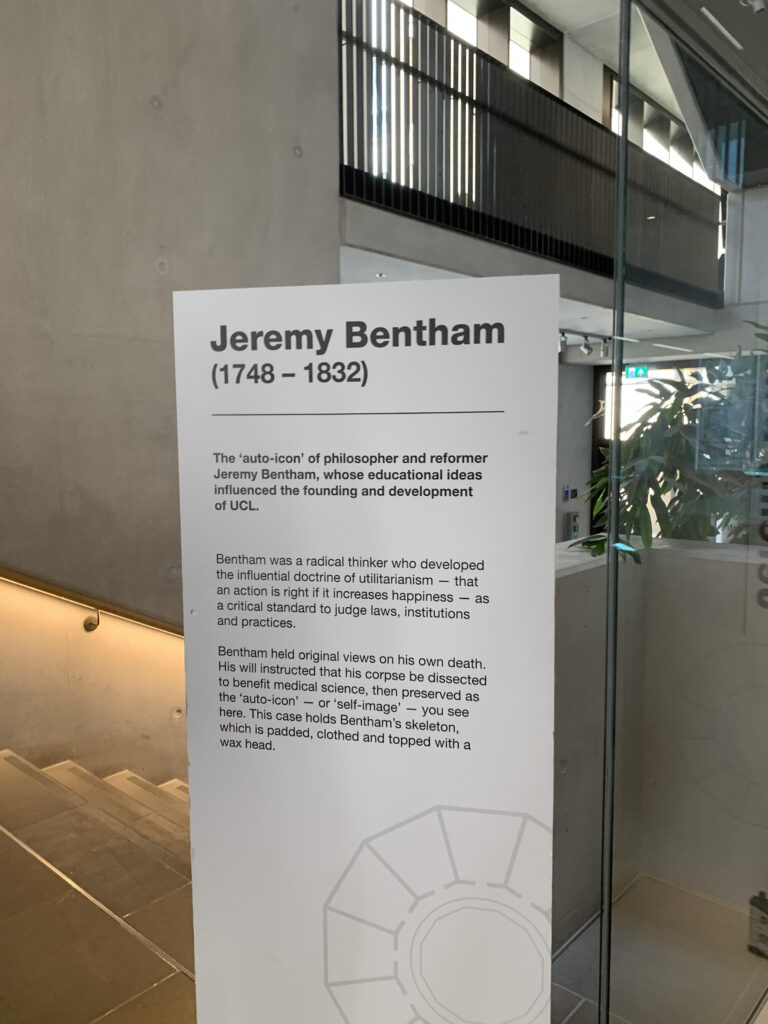
In the afternoon, I attended an event at the Equalities Research Centre, which focused on making research more equitable and inclusive. The session was interesting as it showcased the various initiatives within UCL’s brain sciences faculty aimed at fostering inclusivity. One thing I learned from this was the different impacts of various types of dementia on brain functions, such as memory and language skills.
Day 2: Blog Post Creation and Workshop Attendance
The second day began with downloading and reviewing the work of master’s students, which I would later feature in a promotional blog post for my Work Experience Supervisor. This task was both educational and demanding. I delved into diverse topics, including the effective use of large language models (LLMs) through prompt engineering, the benefits and challenges of the gig economy, and the integration of AI in the workplace. Furthermore, I attended a meeting with Yoana, one of my work experience supervisor’s PhD students, to gain deeper insights into her project. This meeting was important as I learned valuable information in it which I needed for my upcoming tasks.
In the afternoon, Anna had to assist with a workplace workshop, and I joined, observing from the back of the room. During this time, I utilised AI tools like ChatGPT to draft the promotional blog post. This experience was particularly beneficial as it demonstrated how AI can streamline the creative process and enhance productivity. However, staying focused amidst the ongoing workshop was a bit challenging due to the long time period that it went on for.
Day 3: Finalising Blog Post and Starting Information Page
On the third morning, I finished the blog post about the master’s students’ work. This task helped me to improve my skills in prompt engineering, and my overall skills in using AI tools for creating content. Following this, I attended a team meeting that offered further insights into the projects of Yoana and another PhD student, Shiping. The information I learned here was important for my second major project of the week.
In the afternoon, I began working on creating an information page for Anna’s website, which detailed the ongoing research projects within her research group. This involved finding information from different sources I had come across during the week, including my notes from meetings, posters, and research papers which Anna gave me. Later, I attended a seminar by a guest speaker from America (Prof Orit Shaer) who discussed the use of virtual reality (VR) for remote work. The seminar (which you can watch on YouTube here) highlighted the benefits of VR in enhancing focus, reducing stress, and improving convergent thinking in team settings. The day concluded with another exploration of the UCL campus, in order to go and see the previous homes of UCLIC within UCL.

Day 4: Continuing Projects and Starting Work Experience Report
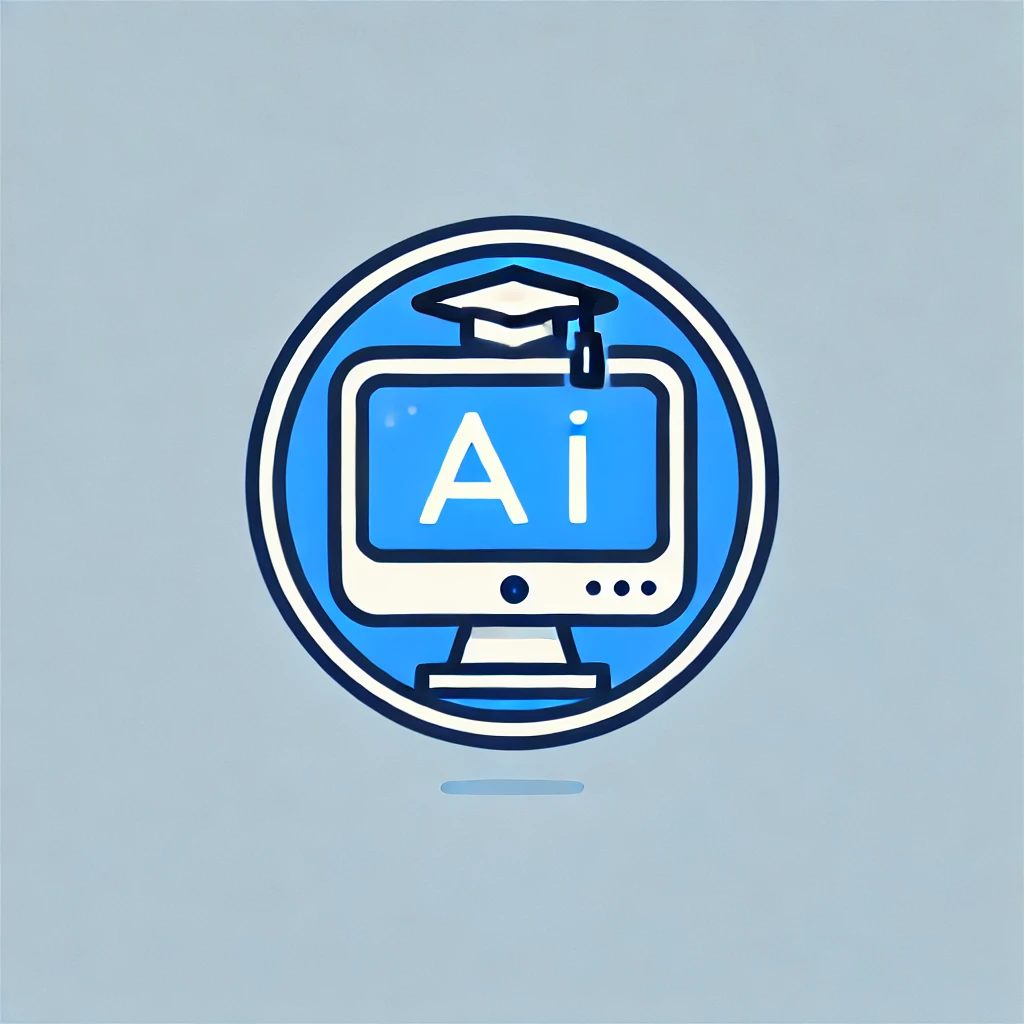
The fourth day was primarily focused on continuing and nearly completing the information page about my work experience supervisor’s research group, using AI to help me make the logo opposite for these projects. Working from home presented some concentration challenges, but I managed to stay focused and learned many things from the ongoing research projects in the research group, including about the Research compliance buddy being created and the research on the use of AI tools in academia.
In the afternoon, I began working on my final project, this report writing about my work experience experiences at UCLIC. This involved reflecting on the week’s activities and thinking about what I had learned this far into my week. I also continued to refine my skills in using AI tools to aid in report writing. Concentrating for extended periods without breaks was difficult, but I managed to push through and make most of the progress that I needed to on this task.
Day 5: Finishing my tasks off on the final day
My morning was primarily focused on completing the remainder of the tasks which I had left. I worked on feedback from my supervisor, learning how to write more engaging texts and how to more easily proofread my work, by using the text to speech feature in Microsoft word. Following this work, I began to work on some ideas for social media posts to act as an advertisement for a survey that my supervisor is running.
Following my lunch break, I continued to work on these twitter posts, trying to make the most eye-catching and interesting advertisements to try and draw in the target audience of UK academics, lecturers and PhD students, leveraging both LLMs for ideas and AI image creation models such as Dalle 3 to achieve this. Following this, Anna showed me how to add the different artefacts that I had created over the week to word press, the tools she uses to create her website so that my work could appear on the website.
Conclusion
My work experience at UCLIC was both enriching and insightful. It provided a comprehensive understanding of the intersection between science communication, research inclusivity, and AI integration as well as what life working at a university is really like. Despite initial nervousness and challenges due to my unfamiliar environment, I successfully completed my assigned tasks. This experience significantly enhanced my skills in using AI tools, understanding inclusive research practices, and effectively communicating scientific ideas. It has been a pivotal experience that has contributed greatly to my personal and professional growth, helping me to better consider my career and educational decisions for the future.
Adaptive, Sociable and Ready for Anything: Undergraduate Students Are Resilient When Faced with Technological Change
Elahi Hossain, Anna L. Cox, Anna Dowthwaite, and Yvonne Rogers. 2024. Adaptive, Sociable and Ready for Anything: Undergraduate Students Are Resilient When Faced with Technological Change. Proc. ACM Hum.-Comput. Interact. 8, CSCW1, Article 198 (April 2024), 32 pages. https://doi.org/10.1145/3653689
The digital age has significantly altered the university experience, pushing more student interactions online and creating new dynamics in social relationships. In this paper we delve into how undergraduate students navigate and adapt to this digital shift, offering insights into their resilience and adaptability.
Key Findings:
- Adaptation to Digital Shifts: The study found that undergraduate students are remarkably adaptable to extensive digital learning environments. Despite the challenges posed by a primarily digital university experience during the COVID19 lockdowns, students utilized various digital platforms creatively to maintain and forge new social connections.
- Loss of In-Person Interactions: One major challenge highlighted was the loss of casual, spontaneous interactions available in physical settings, which are crucial for building deeper social connections. Digital environments often fail to replicate the nuanced interactions that occur naturally in person.
- Strategic Use of Digital Tools: Students demonstrated strategic use of digital tools to overcome these challenges. They chose specific platforms that supported richer, more personal interactions, such as video calls over text messaging, to better emulate face-to-face interactions.
- Building and Maintaining Relationships: The research emphasized the students’ ability to maintain pre-existing relationships and build new ones through digital means. While digital tools are not always perfect substitutes for in-person interactions, they provide vital links that help students navigate their social worlds in digital learning environments.
- Design Recommendations for Digital Learning: The paper also offers design recommendations for future ‘metaversities’ — digital campuses where interactions are more immersive. Suggestions include enhancing the richness of communication tools to better simulate in-person dynamics and designing digital spaces that promote spontaneous social interactions.
Conclusion:
This study showcases the resilience of students in adapting to a digital university environment. It highlights the importance of designing digital learning tools that support natural, rich social interactions to foster a sense of community and belonging among students, which is crucial for their social and academic success. The findings are a testament to the adaptability of the current generation of students, who are ready to navigate the challenges and opportunities presented by the digital transformation of higher education.

